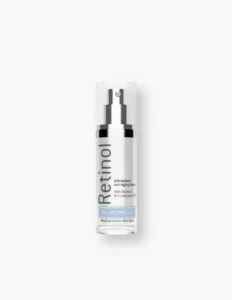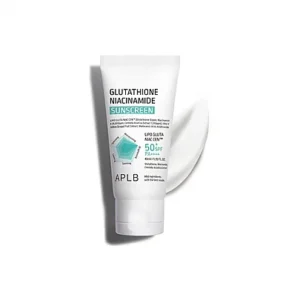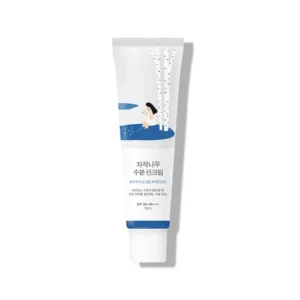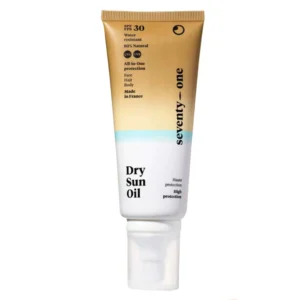Table of Contents
ToggleIntroduction:
Skincare is a personal journey. It’s a daily ritual that can bring comfort, self-care, and, of course, improved skin health. But with the myriad of products available, it can be overwhelming to know how to use them all. How to Layer Skincare?
That’s where skincare layering comes in. Skincare layering is the process of applying your skincare products in a specific order to maximize their effectiveness.
It’s not just about what products you use, but also how and when you use them. In this comprehensive guide, we’ll delve into the art and science of skincare layering.
We’ll explore why it’s essential, the science behind product absorption, and how to prepare your skin for layering. Plus, we’ll provide a step-by-step guide on how to layer your skincare products correctly, including special considerations like how to layer your skincare with retinol.
We’ll also discuss common mistakes to avoid, how to adjust your skincare layering for different seasons and climates, and the impact of lifestyle on your skincare routine.
Whether you’re a skincare novice or a seasoned enthusiast, this guide will help you navigate your skincare routine with confidence. So, let’s embark on this journey to healthier, happier skin together.
Understanding Skincare Layering
How to Layer Skincare?
Skincare layering is more than just a trend. It’s a strategic approach to applying your skincare products to ensure they work their best. The idea is simple: different products have different molecular sizes and purposes.
Some are designed to penetrate deep into the skin, while others work best on the surface. By applying your products in the correct order, you ensure each product can do its job without being blocked by another.
But skincare layering isn’t a one-size-fits-all approach. It requires understanding your skin type, the products you’re using, and the specific needs of your skin.
Why Skincare Layering is Essential?
Skincare layering is essential for several reasons. First, it ensures that your skin gets the full benefit of each product. If you apply a thick cream before a light serum, the serum’s active ingredients may not penetrate the skin.
Second, skincare layering can help prevent adverse reactions. Some ingredients don’t play well together and can cause irritation or reduce effectiveness when applied at the same time.
Finally, a well-layered skincare routine can address multiple skin concerns at once. For example, you can target acne, dryness, and aging all in one routine if you layer your products correctly.
The Science Behind Product Absorption
How to Layer Skincare?
The science of skincare layering lies in understanding how products are absorbed into the skin. The skin is a barrier, designed to keep things out. But it’s also permeable, allowing certain substances to pass through.
The size of a product’s molecules and its pH level can affect how well it’s absorbed. Smaller molecules and products with a similar pH to the skin (around 5.5) are absorbed more easily.
That’s why it’s recommended to apply products with active ingredients, like serums, before heavier creams and oils. The heavier products can create a barrier on the skin, locking in the active ingredients and preventing them from evaporating.
Understanding this science can help you make the most of your skincare products and achieve your skin goals.
Preparing Your Skin for Layering
How to Layer Skincare?
Before you start layering your skincare products, it’s crucial to prepare your skin. This involves two key steps: cleansing your skin and understanding your skin type.
These steps are essential to ensure that your skincare products can work effectively. Without proper preparation, even the best skincare routine can fall short of delivering the desired results.
Let’s delve into these steps in more detail.
The Importance of a Clean Canvas
How to Layer Skincare?
Starting with a clean canvas is the first step in any skincare routine. This means thoroughly cleansing your skin to remove any dirt, oil, or makeup.
These impurities can block your pores and prevent your skincare products from being absorbed properly. Cleansing not only removes these impurities but also helps to exfoliate the skin.
This removes dead skin cells that can also block your pores. With clean and exfoliated skin, your skincare products can penetrate more deeply and work more effectively.
Identifying Your Skin Type
The second step in preparing your skin for layering is understanding your skin type. This is crucial because different skin types have different needs and react differently to various ingredients.
For example, if you have dry skin, you’ll need to focus on hydrating and moisturizing products. On the other hand, if you have oily skin, you’ll want to look for products that can help control oil production without stripping your skin of its natural oils.
Sensitive skin types may need to avoid certain ingredients that can irritate. By understanding your skin type, you can choose the right products for your skincare routine and avoid those that may cause harm.
Remember, skin care is not a one-size-fits-all approach. What works for someone else may not work for you, so it’s important to understand your skin and its needs.
Step-by-Step Skincare Layering Guide
How to Layer Skincare?
Now that your skin is prepared, it’s time to start layering your skincare products. The order in which you apply your skincare products is crucial.
This is because some products need to penetrate deep into the skin to work effectively. Others provide a barrier on the skin’s surface to protect it.
Let’s break down the steps of a typical skincare routine.
Step 1: Cleansing
Cleansing is the first step in your skincare routine. It removes dirt, oil, and makeup from your skin. This step is crucial to prepare your skin for the following products.
Step 2: Toning
After cleansing, the next step is toning. Toners help to balance the pH level of your skin.
They also remove any remaining impurities left after cleansing. Toners can hydrate your skin and prepare it for the next steps in your routine.
Step 3: Treatment Serums
Serums are up next in your skincare routine. These products are packed with active ingredients that target specific skin concerns.
Whether it’s hydration, anti-aging, or brightening, there’s a serum for it. Remember to apply your serums from thinnest to thickest consistency.
Step 4: Eye Creams
Eye creams are designed for the delicate skin around your eyes. They can target concerns like dark circles, puffiness, and fine lines. Apply your eye cream gently using your ring finger.
Step 5: Moisturizing
The final step in your skincare routine is moisturizing. Moisturizers hydrate your skin and lock in all the products that you’ve applied. They also provide a protective barrier on your skin’s surface.
Remember, even if you have oily skin, don’t skip this step. Your skin can produce more oil if it’s not properly hydrated. Now that you know the basic steps of a skincare routine, let’s delve into some special considerations.
Special Considerations in Skincare Layering
How to Layer Skincare?
While the basic steps of skincare layering are straightforward, there are special considerations to keep in mind. These depend on the specific products you’re using and your skin concerns.
For instance, some active ingredients can interact negatively with each other. Others may require specific application techniques to work effectively.
Let’s explore some of these special considerations in more detail.
How to Layer Your Skincare with Retinol
Retinol is a powerful skincare ingredient known for its anti-aging benefits. However, it can be tricky to incorporate into your skincare routine. Retinol should be applied after your water-based serums but before your moisturizer.
This allows it to penetrate the skin effectively without being diluted by other products. However, retinol can irritate, especially for those with sensitive skin.
To minimize this, start with a low concentration and gradually increase it as your skin builds tolerance.

Retinol Serum
- Minimize fine lines and wrinkles
- Penetrate the dermis to target signs of aging
- Stimulate collagen and elastin production to firm the skin
- Lighten hyperpigmentation to even out skin tone
- Rejuvenate skin cells for a smoother, more youthful look
Layering for Different Skin Concerns
How to Layer Skincare?
Your skincare layering routine should also be tailored to your specific skin concerns. For instance, if you have acne-prone skin, you might want to include a spot treatment in your routine.
This should be applied after your serums but before your moisturizer. If you’re dealing with hyperpigmentation, a vitamin C serum can be beneficial.
This should be applied after your toner but before your other serums. Remember, skincare is not one-size-fits-all. Your routine should be customized to your skin’s needs and concerns.
In the next sections, we’ll delve into more specific aspects of skincare layering.
The Role of Sunscreen in Skincare Layering
How to Layer Skincare?
Sunscreen is a crucial part of any skincare routine. It protects your skin from harmful UV rays, which can cause premature aging and skin cancer. In the context of skincare layering, sunscreen should always be the final step in your morning routine.
This is because it needs to sit on top of your skin to form a protective barrier against the sun. Applying other products on top of your sunscreen can dilute its effectiveness.
However, remember that sunscreen needs to be reapplied every two hours when you’re in the sun. So, if you’re wearing makeup, consider using a setting spray with SPF or a powder sunscreen for reapplication.
In the next section, we’ll discuss the differences between daytime and nighttime skincare layering.

Glutathione Niacinamide Sunscreen
A sunscreen offers SPF50+ PA++++ sun protection, which helps protect your skin from strong radiation and external irritation. Enriched with Glutathione Niacinamide and Centella Asiatica to increase skin elasticity while soothing irritated skin.

Birch Moisturizing Sunscreen
Shield your skin from harmful UV rays while keeping it hydrated with Round Lab Birch Juice Moisturizing Sun Cream. This chemical sunscreen is formulated with SPF 50+ PA++++ to provide broad-spectrum protection against UVA and UVB rays.

Dry Sun Oil Sunscreen
Dry Sun Oil SPF 30 is the high-protection sunscreen from Seventy-One, which doesn’t compromise your enjoyment. It effectively protects your skin from UVA and UVB rays, and its golden formula penetrates instantly, giving skin a satin finish and velvety feel.
Nighttime vs. Daytime Skincare Layering
How to Layer Skincare?
Your skin has different needs during the day and at night. This is why your skincare layering routine should vary depending on the time of day. During the day, your skin is exposed to various environmental stressors.
These include pollution, dirt, and harmful UV rays. At night, your skin switches into repair mode. It works hard to heal any damage caused during the day.
This is why certain products are better suited for daytime or nighttime use.
The Nighttime Repair Process
At night, your skin’s blood flow increases. This makes it more receptive to the active ingredients in your skincare products. Retinol, for example, is often recommended for nighttime use.
This is because it can make your skin more sensitive to the sun. Additionally, your skin loses more water at night.
So, a good night cream can help prevent moisture loss and keep your skin hydrated.
Protecting Your Skin During the Day
During the day, your skincare routine should focus on protection. This is why sunscreen is a must in your morning skincare layering routine.
Antioxidant serums, such as those containing Vitamin C, are also great for daytime use. They can help protect your skin from free radical damage.
Remember, your daytime skincare routine sets the tone for how your skin will look and feel throughout the day. So, make sure you’re giving your skin the protection it needs.
Common Skincare Layering Mistakes to Avoid
How to Layer Skincare?
Even with the best intentions, mistakes can happen in skincare layering. Understanding these common errors can help you avoid them.
The goal is to maximize the benefits of each product. But, without the right knowledge, you might be doing more harm than good.
Let’s look at some of the most common skincare layering mistakes.
Over-layering and Product Pilling
Over-layering is a common mistake in skincare routines. It’s tempting to use every product you have. But, using too many products can lead to product pilling.
This is when products roll or ball up on your skin. It’s not only frustrating but also a sign that your skin isn’t absorbing the products.
Instead, focus on using the right products for your skin’s needs. Remember, more isn’t always better when it comes to skincare.
Incorrect Product Order:
How to Layer Skincare?
Applying your skincare products in the wrong order is another common mistake. The order of application can impact the effectiveness of your products.
For example, applying a thick cream before a light serum can prevent the serum from penetrating your skin. This is why it’s crucial to apply your products from the thinnest to the thickest consistency.
By avoiding these common mistakes, you can ensure your skincare layering routine is as effective as possible. Remember, the goal is to nourish and protect your skin, not overwhelm it.
Adjusting Your Skincare Layering for Seasons and Climates
How to Layer Skincare?
Your skin’s needs can change with the seasons and climates. This means your skincare layering routine should also adapt. In the summer, for example, you might need lighter, water-based products.
These can help control oil production and keep your skin hydrated without feeling heavy. On the other hand, winter often calls for richer, more nourishing products.
These can help combat the dryness and irritation caused by cold, harsh weather. If you live in a humid climate, you might need to focus on oil control and hydration.
In a dry climate, your skin might need more moisture and protection from the elements. Remember, the key is to listen to your skin and adjust your routine as needed.
By doing so, you can ensure your skincare layering routine is always tailored to your skin’s current needs.
Tips for Introducing New Products into Your Layering Routine
How to Layer Skincare?
Introducing new products into your skincare layering routine can be exciting. However, it’s important to do so with caution to avoid potential skin irritation. Firstly, always patch-test a new product before applying it to your entire face.
This can help you identify any potential allergic reactions or sensitivities. Apply a small amount of the product to a discreet area, like the inside of your wrist, and wait 24 hours.
If no irritation occurs, you can proceed with adding the product to your routine. When introducing a new product, it’s best to start slow. Use the product every other day or even less frequently at first.
This gives your skin time to adjust to the new product. If, after a week or two, you see no adverse reactions, you can increase the frequency.
Remember, when adding a new product, you might need to adjust the order of your skincare layering. Always consider the product’s consistency and active ingredients.
This will ensure you’re maximizing the benefits of all your skincare products.
The Impact of Lifestyle on Skincare Layering
How to Layer Skincare?
Your lifestyle can significantly impact the effectiveness of your skincare layering routine. Factors such as diet, exercise, sleep, stress, and environmental conditions can all influence your skin’s health.
Diet, Exercise, and Sleep
A balanced diet rich in fruits, vegetables, and lean proteins can provide your skin with the nutrients it needs. Drinking plenty of water is also crucial for maintaining skin hydration.
Regular exercise can increase blood circulation, helping to nourish your skin cells. Getting enough sleep is also vital.
During sleep, your skin goes into repair mode, healing damage from the day and regenerating cells. A lack of sleep can lead to dull skin and accentuate signs of aging.
Stress and Environmental Factors
Stress can trigger skin issues like acne and eczema. Practicing stress management techniques, such as yoga or meditation, can help maintain skin health.
Environmental factors, like air pollution and sun exposure, can also affect your skin. Protect your skin by using products with antioxidants and SPF in your skincare layering routine.
Remember, a healthy lifestyle complements your skincare routine, helping you achieve the best results.
Advanced Skincare Layering Techniques
How to Layer Skincare?
As you become more comfortable with skincare layering, you can explore advanced techniques. These methods can help you further customize your routine to your skin’s specific needs.
The Sandwich Technique
The sandwich technique is a popular method in skincare layering. It involves applying a hydrating product, followed by an active ingredient, and then another layer of the hydrating product.
This technique can help to buffer the active ingredient, reducing potential irritation. It’s especially useful when using potent actives like retinol or vitamin C.
Zoning for Targeted Treatment
Zoning involves applying different products to specific areas of your face. This technique is beneficial if you have combination skin or varying skin concerns.
For example, you might apply an oil-control product on your T-zone and a hydrating serum on your cheeks. Remember, the key to successful skincare layering is understanding your skin and its needs.
Conclusion: Patience and Consistency in Skincare Layering
How to Layer Skincare?
Mastering skincare layering is a journey, not a destination. It requires patience, as the benefits of a well-layered skincare routine often take time to manifest. Consistency is also key.
Your skin thrives on routine, and regular application of your skincare products in the correct order can significantly improve their effectiveness. Remember, skincare is a form of self-care.
Taking the time to layer your skincare products correctly is an investment in your skin’s health and appearance. It’s also an opportunity to slow down, focus on yourself, and practice mindfulness.
So, embrace the process of skincare layering. With time, patience, and consistency, you’ll be rewarded with healthier, more radiant skin.
FAQ's
Can I skip some steps in my skincare routine?
Yes, you can.
Not everyone needs a multi-step skincare routine.
The most important thing is to listen to your skin and give it what it needs.
How long should I wait between applying different skincare products?
It depends on the product.
As a general rule, you should wait until each product is fully absorbed before moving on to the next step.
This can take anywhere from a few seconds to a few minutes.
Can I mix my skincare products to save time?
While it might be tempting to mix your products to save time, it’s not always a good idea.
Some ingredients can react negatively with each other, reducing their effectiveness or even irritating.
It’s best to apply your products separately, in the correct order.
What should I do if my skin reacts badly to a new product?
If you experience a negative reaction to a new product, stop using it immediately.
If the reaction is severe, seek medical advice.
Remember, it’s always a good idea to patch-test new products before applying them to your entire face.
Can I use different skincare products in the morning and at night?
Absolutely.
It’s often recommended to have different morning and evening skincare routines.
Your skin has different needs during the day and at night, so using different products can help address these needs more effectively.
Affiliate Disclosure:
The links contained in this product review may result in a small commission. This goes towards supporting our research and editorial team and please know we only recommend high-quality products.
Note: This article is for informational purposes only and is not intended to diagnose, treat, or cure any disease. Always consult a healthcare professional before taking any supplement or making any changes to your diet or lifestyle.




